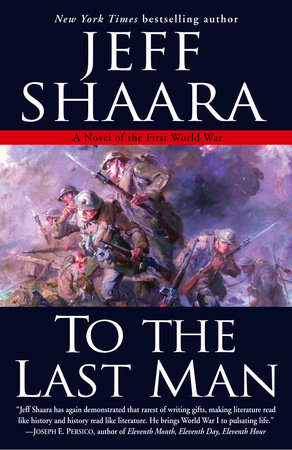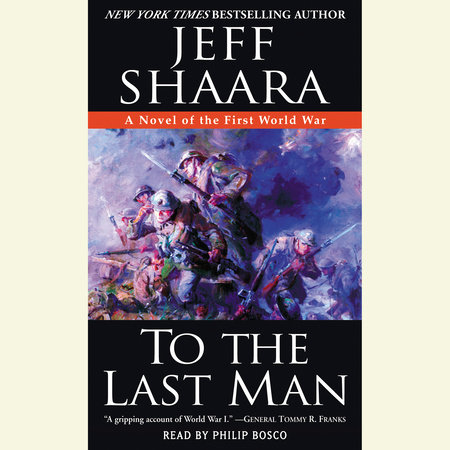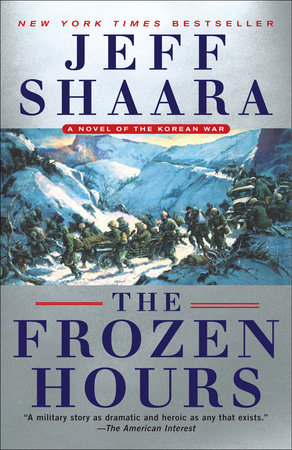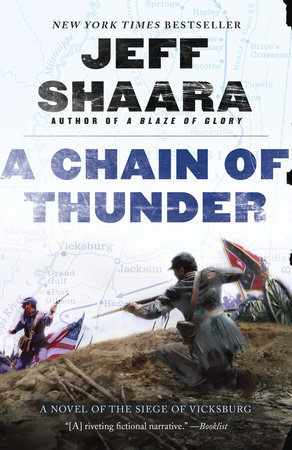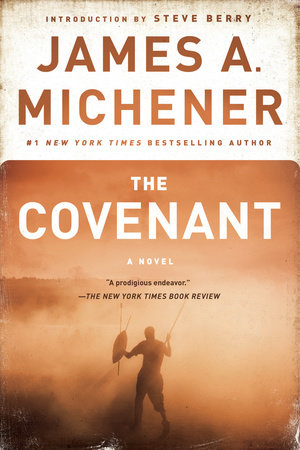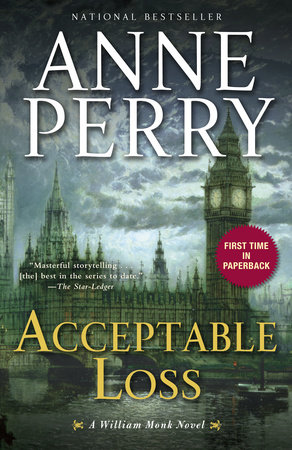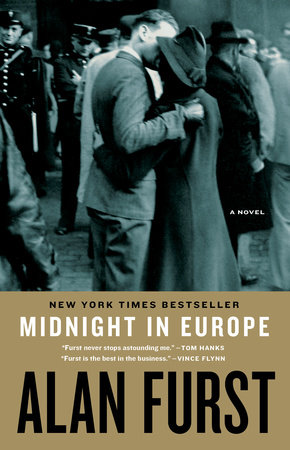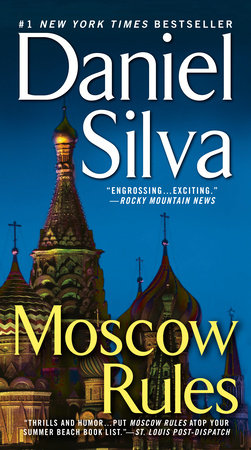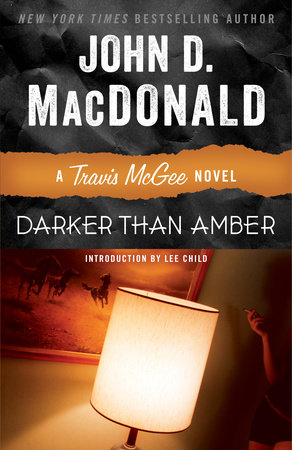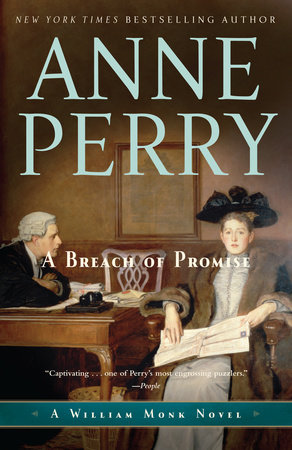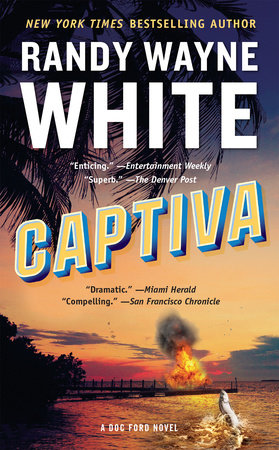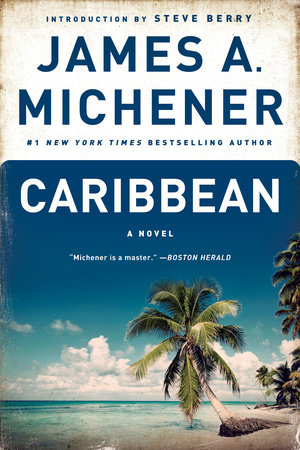Author Q&A
Q. You’ve written five previous novels that dealt with earlier periods of American history. Why move forward? Why World War One?
A. I enjoy digging into stories that most people just aren’t that familiar with. We’ve learned so much about the Second World War and the Civil War, from Hollywood, from history class, from the thousands of books that have been written over the years. I’m often asked why I don’t tackle D-Day or Pearl Harbor, the Alamo or Custer’s Last Stand. The answer is easy: You already know those stories- there’s simply not much I can add. Just like the Mexican War or even the American Revolution, I am drawn to a story that has familiar names in unfamiliar roles. Once I began looking at the characters who were responsible, or who represented so much of what happened in World War One, those who were responsible for so much heroism, so much history, I knew it was a story I wanted to tell. It’s a surprising story, not just for the horror, but for the humor as well, and of course, for the amazing characters.
Q. Two of your main characters are flying aces. What is their appeal?
A. I originally thought I could do an entire book about the “battle flyers”, but I realized that the war in the air was such a contrast to what was happening on the ground that it was a necessary addition to this story. But, once again, it’s not about the airplanes as much as it is about the men who flew them. On the German side, Manfred von Richthofen is at first a cavalryman, who quickly realizes that horses are dangerously obsolete. But he views his airplane as just another horse, as though pilots are just like the knights of old, fighting gallant and honorable duels in the air. The American pilot, Raoul Lufbery was enormously attractive to me for several reasons. First, he completely disagrees with Richthofen’s view of air combat. His job is to kill the enemy, not engage in chivalry. Plus, Lufbery is the most accomplished American ace of the war, and yet most people have never heard of him. This is the man who teaches an entire generation of young American pilots, including Eddie Rickenbacker, how to fly. Plus, Lufbery is a part of the Lafayette Escadrille, an incredible mix of characters, a story that I felt needs to be told. Both Lufbery and Richthofen are marvelous characters.
Q. Von Richthofen is the primary German voice in this story. Why?
A. I didn’t want to spend too much time with the generals. In all my previous books, I look at the events through the eyes of the men at the “top”. Once I realized how fascinating Richthofen was, I knew his voice was crucial to the story. Even though the German commanders, Ludendorff and von Hindenburg, do have a small voice in this story, I wanted to show what life was like for a German hero, a man who had so much responsibility thrust on him to support the morale of his country. But beyond becoming a propaganda tool, Richthofen (the “Red Baron”) was the greatest flying ace of the war, on either side. Some historians have dismissed his reputation as myth. They’re wrong.
Q. Describe the kinds of research you do for a story like this.
A. In all my books, whenever possible, I rely only on original source materials: diaries, memoirs, collections of letters, the voices of the people who were there. One enormous advantage in researching the First World War is the wealth of material that has been passed down. Many of the specific sources were easy to find, such as the memoirs and papers from “Black Jack” Pershing, the young George Patton and George Marshall, and books written by a great many flyers and Marines. But then I was privileged to receive inquiries from descendants (usually the grandchildren) of a number of soldiers who fought in the war. I was so grateful to be given unpublished diaries, collections of photographs, all kinds of wonderful information that you simply can’t find in a modern history book. This is what inspired me to include an “Acknowledgements” page at the beginning of the book, to thank those people who offered me their personal artifacts.
Beyond the reading, it is critical that I walk in the footsteps of the characters. I spent some time in France and Belgium, walking the ground, to get a first-hand look (and feel) for what the countryside was like. That is an important part of every story I’ve done.
Q. Were you surprised by what you discovered about any of the characters in this story?
A. I’ve mentioned the flying aces- I was enormously surprised at the depth of the “Red Baron”, that, through his writings and the writings of the men around him, what life was like for the one part of the German military that was so successful. I was even more surprised to discover how significant Lufbery was to the Allied war effort in the air, and as well, how much humor and charm surrounded him and the other pilots of the Lafayette Escadrille. Pershing’s role was a surprise as well. Much like George Washington, the pure force of John Pershing’s will is what held the American effort together, and allowed the American Expeditionary Force to take to the front lines as a well-trained fighting force, without which the allies would have lost the war. There is an awful lot of revisionist history that dismisses America’s role, especially as written by a great many French and British historians. I was very surprised to learn that in fact, the Americans were enormously responsible for the defeat of the Germans. This isn’t simply my opinion. It’s the opinion of most French and British generals at that time, as well as a good many Germans.
I was also surprised by the role of many of the young men who would become far more famous in World War Two. George Patton is a minor character in this story, as is George Marshall. There are so many similarities in this book to my book on the Mexican War, “Gone for Soldiers”. In Mexico, so many familiar names from the Civil War are much younger men, completely inexperienced as soldiers, who learn the first lessons about life and war. In “To The Last Man”, so many familiar names from the Second World War are fighting in World War One as inexperienced officers, who have their first taste of command and combat, the foundation for what they will accomplish later in life.
Q. Most people have heard of the Red Baron. One other well-known character from this era is Sergeant York. Why didn’t you include him in this story?
A. First of all, just because people are familiar with a character doesn’t mean they know the real story. (I am appalled how many people believe the “Red Baron” is simply a cartoon character). I gave serious consideration to focusing on Alvin York, but in the end, I realized that his story is not so very different from the stories of a great many other anonymous foot soldiers, who did not have the good fortune to return home as a national hero, or to or see themselves portrayed on the silver screen by Gary Cooper. York was certainly a hero, and I’m not taking anything away from his accomplishments, but there were an enormous number of American Marines and Doughboys who deserved attention as well. In the end, I chose to follow the front line action through the eyes of an otherwise anonymous Marine private, Roscoe Temple. The Marines were such a crucial part of the American effort, and for the most part, they participated in every major fight we had.
Q. Is the young Marine, Roscoe Temple, a real character?
A. Temple is a composite character, drawn from the personal memoirs and diaries of several Marines. But every event he witnesses is accurate, every move his squad makes is authentic, every experience is something that was endured by a real Marine. Also, the officers and sergeants who lead his squad into battle are real figures- every name (and the date of their death) is accurate, taken from the official records of the American Second Division, which included the Marines.
Q. What lessons can be learned from this story? Is there something about World War One that is as relevant today as it was then?
A. There is one lesson that Pershing himself was very much aware of. At one point in his memoirs (and in my story), he quotes Napoleon, who said that he always enjoyed fighting a “coalition”, because they are the easiest enemy to defeat. In the First World War, Germany nearly won, because they were fighting a mix of nations who held an uneasy and uncomfortable alliance, and who exhausted as much energy bickering with each other as used to combat their common enemy. Without getting political, which is something I really try to avoid, I believe this lesson is clearly relevant today. Anyone who believes that a coalition is the best way to tackle the challenges of our modern world should give the same heed to Napoleon’s view as did “Black Jack” Pershing.
There is a more obvious lesson of course. As war has become more “modern”, and the technology and weaponry has continued to improve, wars are still fought by soldiers, by young men (and women) with guns. The First World War shocked the entire world by the degree of slaughter, the astounding horror of what war had become. A great many people felt then that humanity would never allow that kind of catastrophe to occur again, that we could elevate ourselves above that kind of ghastly conflict. It only took twenty years, until the start of World War Two for even the most optimistic to be proved wrong.
